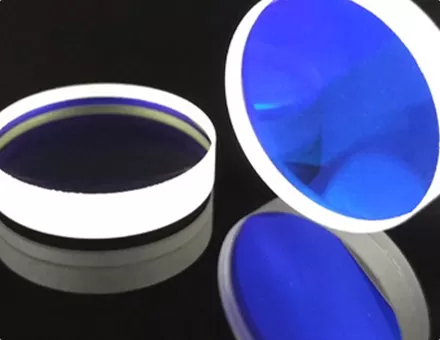Optical windows are critical optical components that are widely used in various optical systems. They are mainly used to separate different environments, for example, to protect internal components of instruments from external environmental influences. The core function of window panes is to affect only the optical path without changing the optical magnification. This article will introduce different types of optical windows and provide a selection guide to help users choose the appropriate optical windows according to their needs.
Main Types of Optical Windows
λ/4, λ/10 Visible Light Windows
The optical windows have a wide range of designs and applications. For example, λ/4 and λ/10 visible light window panes are commonly used to protect electronic sensors or environmental detectors. These window panes are usually flat with highly parallel surfaces, suitable for different spectral bands. Depending on the requirements of different bands, appropriate anti-reflection coating options can be selected, such as UV, VIS, NIR, and SWIR. For infrared applications, barium fluoride (BaF2), calcium fluoride (CaF2), zinc sulfide (ZnS), zinc selenide (ZnSe), silicon (Si), and germanium (Ge) are suitable. Fused silica and sapphire perform excellently in ultraviolet applications.
Standard Precision Plane Window Panes of UV Fused Silica
In the ultraviolet spectrum range, fused silica window panes exhibit extremely high transmittance and optical performance. These standard precision plane window panes are particularly suitable for ultraviolet light applications, and their anti-reflection coating options include UV, VIS, NIR, and SWIR. Unlike the window panes for infrared applications, UV fused silica window panes can provide higher transmittance, suitable for high-precision optical systems and equipment.
K9 High-Precision Double-Sided Optical Flat
K9 high-precision double-sided optical flat is a standard plane used for detecting and identifying other optical components. Its surface figure error can reach λ/10 or λ/20, making it highly suitable for flatness detection of surfaces with high cleanliness. As a high-precision optical standard, K9 flats can effectively evaluate the flatness and fit performance of other optical components.
Applications of Special Optical Windows
K9 High-Precision Wedge Window Pane
K9 high-precision wedge window pane has an angle of 31 arc minutes between its two planes. This design effectively avoids interference effects (Etalon effect) caused by reflection from highly parallel front and rear surfaces of the window, while reducing optical feedback interference in the laser resonant cavity, thus improving laser output stability. This type of window pane is ideal for high-precision laser applications.
K9 Hemispherical Dome
The K9 hemispherical dome window pane is designed in a hemispherical shape, commonly used for applications involving large-angle incident light, such as detectors and optical sensors. This design allows light to pass through within a large angle range, effectively protecting internal optical components from external environmental impacts.
UV Fused Silica Brewster Window Pane
Brewster window pane is a special type of optical window pane used to obtain linearly polarized light. When light is incident at the Brewster angle, the S polarization component is partially reflected while the P component is almost entirely transmitted. By applying multilayer coatings, the S component can be continuously reflected, thereby achieving efficient transmission of linearly polarized light. This type of window pane is particularly important in high-precision optical systems and is widely used in laser systems and optical analyzers.
Optical windows play a key role in modern optical systems. Choosing the right type and material of window panes is crucial to ensuring the performance of optical systems. From visible light windows, standard precision plane window panes of UV fused silica to special application wedge window panes and Brewster window panes, each type of window pane has its unique application scenarios and advantages. Understanding the characteristics of different types of window panes can help users select the most suitable optical windows according to specific needs, thereby enhancing the overall performance of the system.


















 EN
EN





